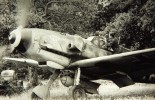German Blitzkrieg – Warfare Designed for Quick Victory

German Blitzkrieg
Published by Luftwaffe Sim (German Blitzkrieg)
The traditional interpretation of blitzkrieg is that of German tactical and operational approach in the first half of the Second World War that was frequently hailed as a brand-new approach of warfare. The word, indicating “lightning war”, in its strategic means is connected with a series of decisive and fast brief battles to deliver a knockout blow to an enemy state before it could fully mobilize. Blitzkrieg as made use of by Germany had significant psychological, or as some writers call, “terror” elements, such as the ‘Jericho Trompete’, a noise-making siren on the Junkers Ju-87 dive-bomber to influence the spirits of opponent forces.
See the full series of a historic review of the Blitzrieg HERE.
The term German Blitzreig:
The origins of the term blitzkrieg are obscure. It was never used in the title of a military teaching or handbook of the German army or air force. It appears seldom to have been utilized in the German military press before 1939. Recent study conducted at the German military historic institute at Freiburg has found only 2 military posts from the 1930s in which it is used. Neither short article promotes any radically brand-new military doctrine or approach to war. Both utilize the term merely to suggest a quick strategic knockout. The first, published in 1935, deals mostly with food (and to a lower extent with raw material) supplies in wartime. The term blitzkrieg is right here used with reference to Germany’s efforts to win a fast triumph in the First World War and is not connected with using armored or mechanical forces or with air-power. The argument is that Germany has to establish self-sufficiency in food supplies due to the fact that it may once more verify difficult to deal a quick knockout to her opponents and a lengthy complete war may show unavoidable. The 2nd post, released in 1938, specifies that introducing a swift strategic knockout has excellent attractions for Germany but appears to accept that such a knockout will be very challenging to achieve by land attack under modern-day conditions (especially in view of the presence of systems of stronghold like the Maginot Line) unless an incredibly high degree of surprise is attained.
Another fairly early use of the term in a German-language work was in a book by Fritz Sternberg, a Jewish Marxist political economist who was a refugee from the Third Reich. Entitled Die Deutsche Kriegsstärke (German War Strength), it was released in Paris in 1939. It had been preceded by an English-language edition of 1938 called Germany and a Lightning War. The German edition uses the term blitzkrieg. The book’s argument is that Germany is not prepared economically for a long war however could win a lightning war. It does not deal with in any information tactical and operational matters, and does not recommend that the German military had evolved a significantly brand-new operational method. It offers little ideas as to how German lightning victories may be won.
See the full series of a historic review of the Blitzrieg HERE.
Hitler, in a speech in November 1941, stated “I have never ever made use of the word Blitzkrieg, because it is a really ridiculous word”, and it appears even at the start of 1942 he dismissed it as ‘Italian phraseology’.
During the First World War, on the Western front, the two sides had actually been locked in a trench war, where kill zones by overlapping fire of machine guns and barbed wire avoided either side from breaking with. The British introduced the tank as invulnerable to gatling gun fire, and able to cross trenches and breach barbed wire, to lead men throughout the battleground. The British had been able to penetrate German lines by doing this, but not enough tanks were made before the war ended. The Germans had for that reason first-hand experience of the capacity of tanks to change the battleground. Where the allied armies were sluggish to study the tank and deploy in the inter-war years, the German army was really eager to study and master this new innovation.
German blitzkrieg functional theories began to progress right away after Germany’s defeat in the First World War. The Treaty of Versailles restricted any German Army to a maximum of 100,000 guys, making difficult the deployment of massed troops which had distinguisheded German approach before the War. The Reichswehr was influenced by its analysis of pre-war German military thought, in particular the infiltration strategies which at the end of the war had seen some developments in the Western Front’s trench war, and the maneuver warfare which controlled the Eastern Front.
Game play possible to reenact the furry of the German Blitzkreig through wwiionline.com.
With respects to multi-player pc games, there is nothing more capable to simulate German Blitzkrieg tactical warfare than WWIIOnline.com. It features the ability to offer land, air and sea military assets for which when combined into an attack is able to demonstrate the speed in which this type of lightening warfare is most effective.






